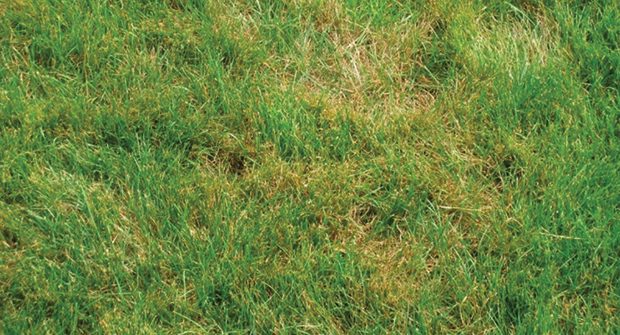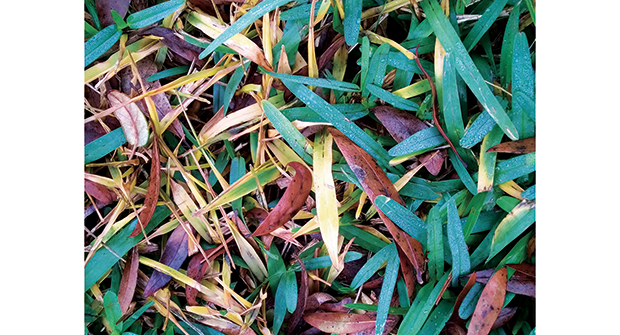
Every spring, after three or four humid 85-degree F days, Branden Rheinschmidt knows brown patch will be a problem for nearly all his clients.
“Here, 99 percent of fescue yards will get brown patch sometime between May 1 and May 15,” says Rheinschmidt, owner of FineTurf in Charlotte, N.C. “You can almost pinpoint when it will start.”
In April, Rheinschmidt sends a newsletter to his customers offering them a preventive program to keep the disease at bay. About half of his customers sign up for it. The other half will likely see irregularly shaped brown patches throughout their lawns until the fall when temperatures cool and the turf can recover.
“Brown patch is much easier to prevent than it is to control,” Rheinschmidt says. “Fescue doesn’t grow at 85 degrees F, so once the lawn has the disease, the damage is done.”
The combination of heat and moisture is the perfect breeding ground for Rhizoctonia solani, the fungus responsible for brown and large patch, although different strains of the fungus are responsible for each disease. Brown patch strains are specific to cool-season grasses and are most active in spring and summer during warm, humid conditions. Large patch strains are specific to warm-season grasses and cause disease when temperatures are cooler in the fall and spring.

These diseases affect the turf’s leaves and leaf sheaths, causing irregular tan, yellow or brown patches that can measure anywhere from 6 inches to 3 feet in diameter. Leaves affected with brown or large patch are easily pulled off the stem.
“Although unsightly, it does not typically kill the turf,” says Ian Rodriguez, Ph.D., technical services manager for Quali-Pro. “Avoiding excess irrigation and soluble N applications during peak conditions will go a long way in preventing the disease. If curative measures are needed, most turf-labeled fungicides cover brown and large patch.”
Patch prevention
To prevent brown patch, Rheinschmidt applies azoxystrobin in the spring before the disease appears and then every 21 to 28 days throughout the summer. This program almost always prevents brown patch from appearing, Rheinschmidt says, although there can be an occasional breakthrough if rain washes the product away before it can work or if a lawn is mowed too soon after the fungicide application. He adds that most of his customers who forgo the preventive program in the spring are likely to sign up for it the following year once they see the disease take hold.
Lane Tredway, Ph.D., technical services manager for Syngenta, agrees that a preventive approach is best when it comes to brown and large patch. Brown patch applications should be initiated in the spring to early summer, when nighttime air temperatures are consistently above 60 degrees F. Large patch applications should be initiated in late summer to fall, when soil temperatures are below 70 degrees F.
“Both diseases attack when turf is growing slowly, so recovery from damage can take weeks or months,” Tredway says. “LCOs should initiate preventive applications when weather conditions become conducive to infection.”
Rheinschmidt advises LCOs to train applicators, as well as homeowners, to properly identify patch diseases to help stay ahead of the problem. He says sometimes patch diseases can look similar to the damage caused by dog urine or by scalping a lawn. Rheinschmidt sees brown patch most often in turf that is stressed by dry, hot conditions, rather than in shaded areas that are better protected from the heat.
“Because most diseases are weather-related, they are pretty predictable,” he says. “Be on the lookout. If you catch it early enough, the damage isn’t as bad.”

